Evolution of Money
Points to Ponder in This Article – Just understand the definitions of money system that were used over the time from ancient to modern one. Understand the differences between barter system, bank money and crypto currencies.
Money, as we know it today, is the result of a long process. At the beginning, there was no money. People engaged in barter, the exchange of merchandise for merchandise, without value equivalence.
Barter System
| Positives | Negatives |
|
|
Function of Money
| Primary Function | Derivative Function |
Measure of Value + Medium of Exchange as it is –
|
|
- In barter system, it was difficult to determine how much each of the labour should earn from the total production.
- But money’s primary function viz. measure of value makes it possible to determine the share of individual worker in the total production and pay him accordingly.
- Helps in Distribution of National income.
- Anyone who provides any of the four factors of production viz. land, labour, capital, entrepreneurship; will earn money as rent, wage, interest or profit.
- Less chances of exploitation (compared to the Barter system, feudal system, Zamindari system)
- Thus, money helps in distribution of income among various factors of production.
Evolution of Money
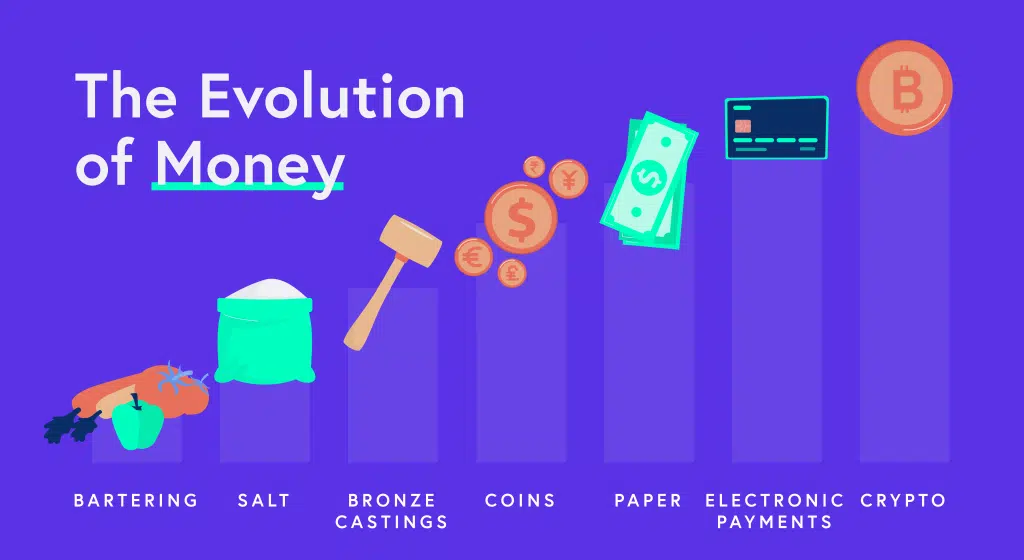
Commodity Money
- Intrinsic value of commodity was used to make exchanges viz.
- USA > Tobacco, Corn, Iron nails were used to make exchanges.
- Aztec > Cocoa beans were used to make exchanges.
- India > Cowries were used to make exchanges.
- Fiji > Whale teeth were used to make exchanges.
- Problems of commodity money
- Face Value was not same throughout region.
- Face value was not same for outsiders.
- Generally, commodity used were perishable in nature > could cause inflation.
- Generally bulky to carry.
- No fungibility or divisibility > No division of labour.
Metallic Money
- Started by Kings & Traders with uniformity & precision
- Forged in Gold (Muhr) > High value
- Forged in Silver (Rupaiya) > Moderate value
- Forged in Copper/ Bronze (Dam, Paisa) > For day to day purchases
Positives of Metallic Money
- Intrinsic value + Non-perishable
- Divisible, Fungible
- Foreign trade possible (without exchange rate)
- Production was low > Prices stable > No Hyperinflation
Negatives of Metallic Money
- Mansabdari payment system > 50% in Gold +25% in Silver + 25% in Copper
- Copper Dam Debasement > 20 gm copper in Akbar time in a coin | 13 gm copper in Aurangzeb time
- People became vary of coin values > Again started barter system
- Tax collection & revenue system started declining
- People started using East India company coins
- Bulky to carry
- Smuggling for intrinsic value to other Kingdoms (Main reason for debasement)
Paper Money (Fiat Money)
- Fiat Money > Used by the command of the government
- Examples include > US dollar, Indian Rupee, Euro, Yen, Yuan
- Legally recognized to settle all debts & payments within territorial jurisdiction
- Initially Fiat Money was pegged to Gold viz.
- 1 US $ > 22 grains Gold
- 1 British Pound > 113 grain gold
- 1 Pound > 113/22 > 8 US $
- But during world war 2 this system collapsed
- After WW2 Fiat Money was formatted as Paper standard viz.
- Central Bank free to print currency without gold backing
- Exchange Rates > Fixed Exchange rate + Floating Exchange rate + Managed Exchange rate
What is not Fiat Money?
- Money without government legal backing
- Superstores plastic coins, cards & coupons
- Shares, Bonds, Debentures, G-Sec, T-bill
- DD, Cheques, Credit Card, ATM card
- Bitcoin & other Digital currency
Problems of Fiat Money
- Debasement > Over printing > Hyper inflation
- Still Bulky to carry + Theft + Counterfeit
- Change problem > Rounding off problem
- Imagine a petrol pump not returning 60 paise per customer due to change problem
- For Every 1 lakh customers pump is earning 60,000 rupees
India > Paper Standard |
|
RBI
|
Government
|
Bank Money
- Backed by Central bank of the country viz.
- Cheque, Bank Draft, NEFT, RTGS
- Credit card, Debit cards, Visa Card, Master card, Rupay card
- Benefits of Bank money
- Spot payment + Deferred payment + Time saving
- Easy to transfer over long distance
- Exact amount can be transferred (No change problem)
- Hard to counterfeit
- Can be freezed if card is stolen via. KYC norms
- Legally recognized for high value payment
Crypto Currency / Virtual Currency → Bitcoin
- Major reasons for birth of crypto currency
- Subprime crisis > US QE > Increased dollar supply > Dollar’s purchasing power decreased
- Banks charge fees on online transfer, credit card, ATM
- Anarchist groups (a person who believes that government and laws are not necessary)
- Birth of Bitcoin
- Started in 2009 by Satoshi Nakomoto
- 1 BTC > 10(^8) Satoshi – Virtual money
- Reward distribution for solving algorithm + Exchange by Fiat money + Selling goods & services
| RTGS | NEFT | BITCOIN |
|
Less than 2 L | No ceiling |
| Processing fees | Processing fees | None |
| Instant Transfer | Transfer within 1 hour cycle | Transfer upto 10 minutes |
| Specific Timing & days | Specific Timing & days | None > can do 24/7 |
| Central monitoring by RBI | Central monitoring by RBI | None |
| Can recover account via. password | Can recover account via. password | Once gone then gone forever |
| Requires Account number + IFSC code for transfers | Requires Account number + IFSC code for transfers | Only public address of wallet is required |
| KYC norms applies | KYC norms applies | None |
RBI Stand on Decentralised Digital Currency / Virtual Currency (Bitcoin)
- No central bank has authorized Bitcoins
- Not Traded through BSE, NSE or Commodity exchange (SEBI, FMC)
- No Forex dealers under FEMA can convert Fiat currency into Bitcoin or vice versa
- Bitcoin Exchange website > Legal status unclear
- Danger > Hacking, Phishing, Malware, Password lost
- Consumer courts cannot help
- High speculation & volatility
- Mere digital code, no intrinsic value, not backed by Gold, silver or crude oil
- Media reports on illegal drug, money laundering, terror-financing.
- Unintentionally breaching anti-money laundering / Anti-terror laws
- Same for all Digital currencies / Virtual currencies
For more updates, visit www.iasmania.com. Please share your thoughts and comments.
If you’re passionate about building a successful blogging website, check out this helpful guide at Coding Tag – How to Start a Successful Blog. It offers practical steps and expert tips to kickstart your blogging journey!


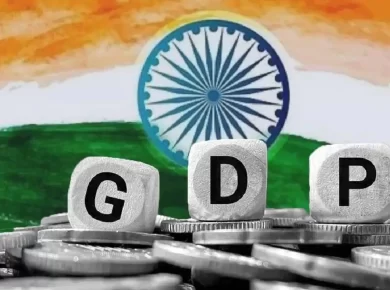

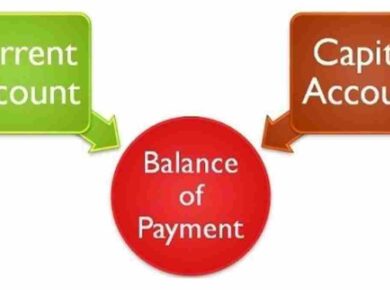
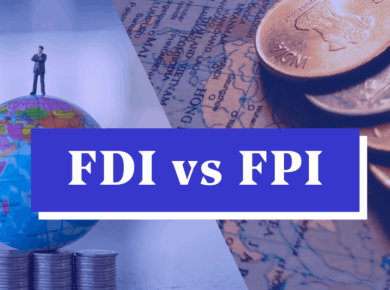



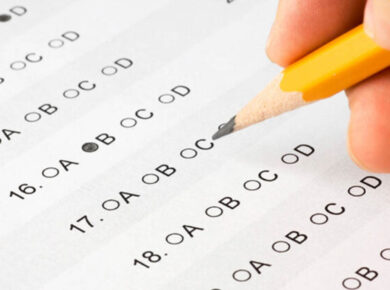
7 comments
very good effort
Excellent Post
Grt…..
easy to understand…thanks iasmania
This is called notes otherwise all websites so far i have visited were just copy paste material but here to the point answer.Absolutely as mentioned by above written statement it is -Easy To Digest Material.
And quick to study during exam time,when we have shortage of time.Thanks Iasmania for this.
very simplified …easy to digest..thank you
awesome notes for IAS preparation